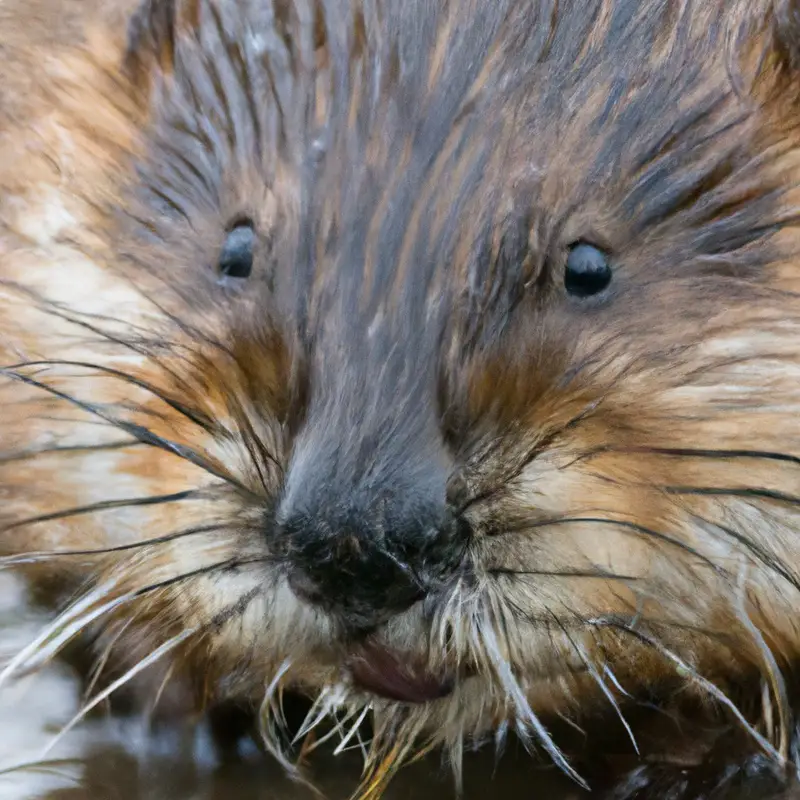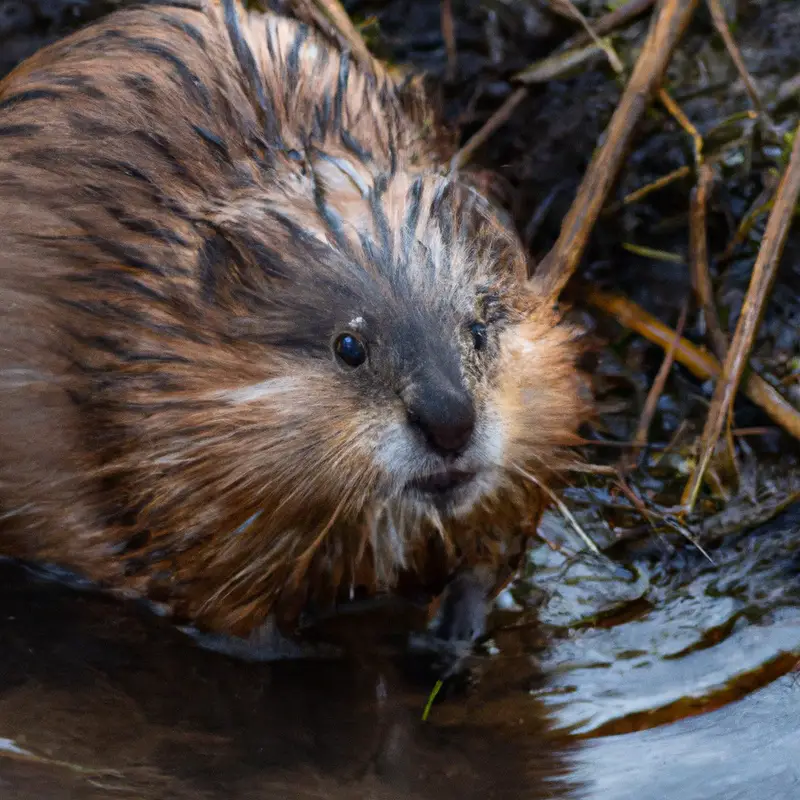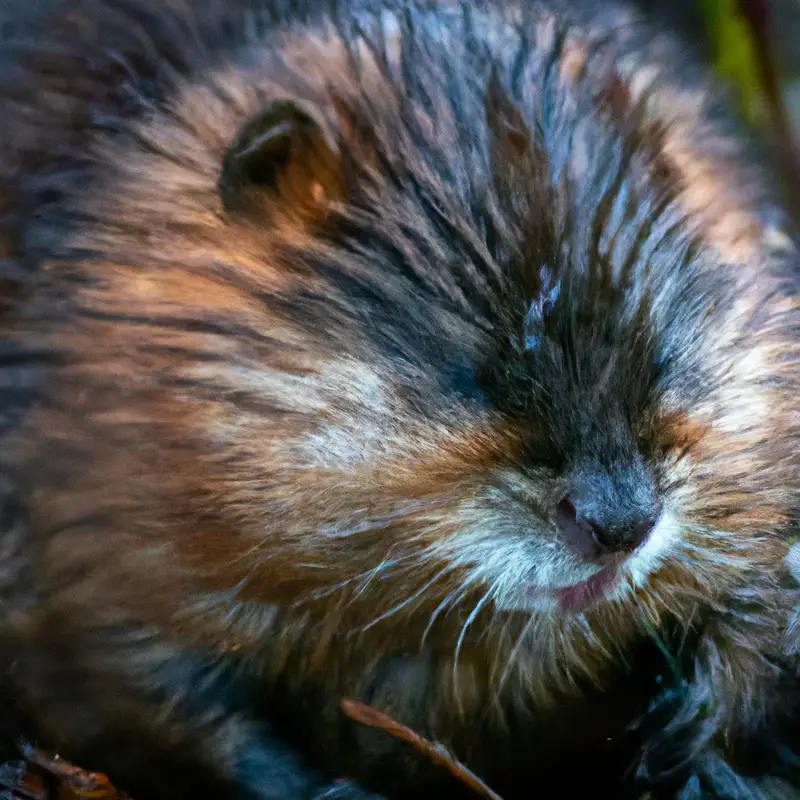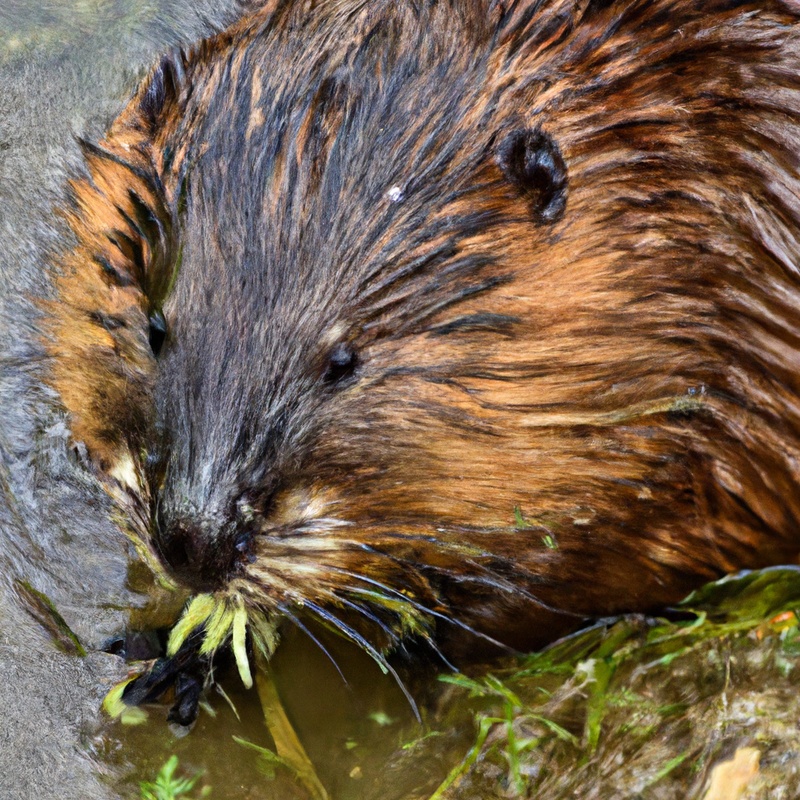Key Takeaways:
- Muskrat hunting in Colorado is legal and regulated.
- Muskrat hunting requires a valid hunting license and a special trapping permit.
- The muskrat hunting season in Colorado typically runs from November to February.
- It is important to follow state regulations and practice ethical hunting methods when pursuing muskrat.
Are you looking for a unique hunting experience in Colorado? Well, look no further than hunting muskrat! These intriguing creatures are not only fascinating to learn about but also provide an exciting hunting opportunity.
In this article, I’ll give you an overview of the muskrat species, their habits, and behavior.
We’ll explore the hunting opportunities in Colorado, including specific regulations and the best time and locations for muskrat hunting. I’ll also share important information you need to know before heading out, including licensing requirements and proper equipment.
So, if you’re ready to embark on an adventure and reap the benefits of muskrat hunting, let’s dive in!
Hunting Muskrat in Colorado | |
|---|---|
Aspect | Information |
License | Valid hunting license required |
Hunting Season | December 1st to March 31st |
Bag Limit | No bag limit |
Hunting Methods | – Trapping with Conibear or foothold traps – Shooting with firearms or bow and arrow |
Legal Restrictions | – Hunters must have a valid Colorado state-issued furbearer certificate – Muskrats must be checked and tagged |
Conservation | – Practice ethical hunting – Respect private property and request permission before hunting – Follow all hunting regulations and guidelines |
The Muskrat: A Unique Species
Physical characteristics of the muskrat
The muskrat is a unique species with distinct physical characteristics.
They have a stocky body, measuring around 10 to 14 inches long, with a tail that adds another 7 to 12 inches.
Their fur is dense and waterproof, ranging in color from dark brown to black.
Muskrats have webbed hind feet for swimming and digging, and their front feet are smaller with sharp claws for grooming and manipulating objects.
Their eyes and ears are positioned high on their head, allowing them to see and hear while partially submerged.
Overall, these physical adaptations make muskrats well-suited for their semi-aquatic habitat.

Habits and behavior of the muskrat
The muskrat is a fascinating creature with unique habits and behavior.
These semi-aquatic rodents are most active during the night, but can also be seen during the day.
They are excellent swimmers and have the ability to hold their breath for up to 15 minutes.
Muskrats build dome-shaped lodges made of vegetation, which provide them with protection and insulation during the colder months.
They are herbivores, feeding on a variety of aquatic plants, roots, and stems.
Muskrats are also known for their impressive ability to dig burrows into the banks of lakes and rivers.
These burrows serve as their homes and provide them with access to their food sources in the water.
In addition, muskrats are highly territorial and mark their territory with scent glands.
Overall, the muskrat’s habits and behavior are perfectly adapted to its aquatic lifestyle.
Hunting Opportunities in Colorado
Overview of hunting in Colorado
Hunting in Colorado offers diverse opportunities for avid hunters.
The state boasts an abundance of wildlife, including elk, deer, moose, and small game like muskrats.
Each hunting season provides a unique experience, as the landscapes vary from mountains to plains.
Additionally, the state has enacted strict regulations to ensure the sustainability of its wildlife populations.
Before embarking on your hunting adventure, make sure to review the state’s licensing requirements, hunting season dates, and specific rules for each game species.
Enjoy the thrill of the hunt in Colorado’s beautiful wilderness!
Best time and locations for muskrat hunting in Colorado
The best time for muskrat hunting in Colorado is during the fall and winter months when their fur is thicker.
Look for areas with freshwater marshes, ponds, or lakes, as muskrats are usually found in these habitats.
Some popular locations for muskrat hunting in Colorado include the Colorado River, Pueblo Reservoir, and the wetlands around the Great Sand Dunes National Park.
Remember to always check the local hunting regulations and obtain the necessary permits before heading out.
Happy hunting!

What You Need to Know Before Hunting Muskrat
Licensing and permit requirements in Colorado
In order to hunt muskrat in Colorado, you will need to ensure that you have the required licenses and permits.
In Colorado, a valid small game license is necessary if you are planning to hunt muskrat.
It’s important to note that these licenses are specific to the state of Colorado, so make sure you have the appropriate documentation before heading out.
Additionally, be aware of any additional regulations or restrictions that may apply to muskrat hunting in Colorado, as these can vary depending on the location and time of year.

Proper equipment and gear for muskrat hunting
Proper equipment and gear are essential for muskrat hunting. Here’s what you’ll need:
- Firearms: A .22 caliber rifle or a shotgun with #2 shot is ideal for muskrat hunting. Check local regulations for any specific requirements.
- Waders or Waterproof Boots: Muskrats are typically found near water, so invest in quality waders or waterproof boots to keep your feet dry and comfortable.
- Decoys: Muskrats are territorial and can be attracted to decoys. Buoys or small floating objects can be used as decoys to lure them closer.
- Traps: Traps are another effective way to catch muskrats. Consider using body grip traps or cage traps, following local trapping regulations.
- Binoculars: Binoculars can help you spot muskrats from a distance, especially when scouting potential hunting areas.
- Camouflage Clothing: Blend in with your surroundings by wearing camouflage clothing. This will help you stay hidden and increase your chances of success.
Remember to always check local regulations and obtain the necessary permits before hunting muskrats. Happy hunting!
Safety considerations for hunting muskrat
Safety is paramount when hunting muskrat. Here are some important considerations:
- Wear appropriate safety gear: Always wear a life jacket or floatation device while hunting muskrat in or near water. In colder weather, dress warmly to avoid hypothermia.
- Use proper firearm safety: Treat every firearm as if it’s loaded, always point the muzzle in a safe direction, and keep your finger off the trigger until you’re ready to shoot. Follow all state and local regulations regarding firearm usage.
- Be aware of your surroundings: Before firing a shot, make sure there are no other hunters or people downrange. Be cautious of potential hazards such as hidden obstacles or unstable ground.
- Be familiar with your equipment: Practice shooting and handling your firearm before heading out into the field. Knowing how your gun operates will help prevent accidents and ensure you can handle it safely.
- Communicate with others: If hunting with a group, establish clear communication and signal systems to ensure everyone stays safe. Always let someone know your hunting plans and expected return time.
Remember, safety should always be a top priority when hunting muskrat or engaging in any hunting activity. Stay alert, follow regulations, and use common sense to have a safe and enjoyable experience.
Techniques and Strategies for Muskrat Hunting
Overview of trapping methods for muskrats
There are several effective trapping methods for muskrats.
One common method involves using body-gripping traps, such as the Conibear trap, which is designed to quickly and humanely kill the animal.
Another method is the foothold trap, which captures the muskrat by securing its leg.
Live traps can also be used, allowing for the capture and relocation of the muskrat.
Additionally, some trappers use underwater traps positioned in muskrat burrows.
These traps are typically baited with vegetation or other food sources to attract the muskrat.
Remember to check your local regulations and obtain the necessary permits before trapping muskrats.
Baiting and luring techniques for muskrat trapping
When it comes to baiting and luring techniques for muskrat trapping, there are a few effective methods you can try. One option is using fresh fruits and vegetables, such as apples or carrots, to attract muskrats to your traps.
Another technique is to use a commercial lure specifically designed for muskrat trapping.
You can apply the lure near your traps or on a lure stick to entice the muskrats to investigate. Additionally, placing some bait inside the trap itself can also be effective.
Remember to regularly check your traps to ensure timely and humane capture.
Tips for locating muskrat burrows and travel routes
Locating muskrat burrows and travel routes requires a keen eye and some basic knowledge. Here are some tips to help you find them:
- Look for mud slides: Muskrats create muddy paths when entering or exiting their burrows. These slides are a clear sign of their activity.
- Check near water bodies: Muskrats prefer to make their homes near freshwater sources such as ponds, lakes, or rivers. Search along the banks for their burrows.
- Watch for piles of vegetation: Muskrats build cozy nests using vegetation. Look for piles of sticks, reeds, and cattails near the water’s edge.
- Keep an eye out for tracks: Muskrat footprints resemble tiny handprints and can be found in muddy areas near the water.
- Consider using a tracking tunnel: Setting up a tracking tunnel with sand or flour near suspected burrow entrances can help you identify muskrat footprints.
Remember, muskrats are active mainly at dawn and dusk, so early morning or late afternoon is the best time to spot their signs. Happy hunting!
The Benefits of Muskrat Hunting
Ecological importance of muskrat hunting
Ecological importance of muskrat hunting lies in the regulation of their population.
Hunting helps maintain a balanced muskrat population that is essential for the health and stability of wetland ecosystems.
By controlling muskrat numbers, it prevents overgrazing of vegetation and the destruction of marsh habitats.
This, in turn, benefits other wildlife species that depend on wetlands for food and shelter.
Effective muskrat hunting practices promote biodiversity and contribute to the overall ecological well-being of the wetland ecosystem.
Utilizing muskrat as a food source
If you’re looking for a new and unique source of food, muskrat might be worth considering. Muskrat can be utilized as a food source in various ways.
The meat of the muskrat is lean, flavorful, and can be prepared in different dishes such as stews, pies, and sausages.
Muskrat is also high in protein and low in fat, making it a healthy option. Furthermore, utilizing muskrat as a food source can contribute to sustainable and ethical practices, as muskrats are abundant in certain regions and their population can be managed through regulated hunting.
So, if you’re up for trying something different, muskrat might just be the answer.
Economic and recreational benefits of muskrat hunting in Colorado
Muskrat hunting in Colorado offers both economic and recreational benefits. From an economic perspective, the sale of muskrat pelts can provide income for hunters and stimulate local economies.
Additionally, muskrats can cause damage to crops and infrastructure, so hunting helps to control their population and mitigate these negative impacts.
On the recreational side, muskrat hunting allows individuals to connect with nature, enjoy the outdoors, and experience the thrill of the hunt. It can be a rewarding and enjoyable activity for hunters of all experience levels.
Frequently Asked Questions (FAQs)
Can I hunt muskrat without a license in Colorado?
No, you cannot hunt muskrat without a license in Colorado. In the state of Colorado, a valid hunting license is required for hunting any fur-bearing mammal, including muskrat.
It is important to adhere to the state’s regulations and obtain the necessary license before engaging in any hunting activity.
This helps ensure the conservation of wildlife and the management of hunting activities. So, make sure to get your hunting license before going after muskrat in Colorado.
What type of traps are commonly used for muskrat hunting?
Muskrat hunting typically involves the use of various types of traps.
The most commonly used traps for muskrats include:
- Conibear traps: These are body-gripping traps that quickly and humanely capture muskrats when they swim through them. These traps are effective in water settings.
- Foot-hold traps: Foot-hold traps are designed to restrain the muskrat by capturing its foot. They are commonly used on land, near muskrat dens or runways.
- Foothold restraining traps: Similar to foot-hold traps, these traps are intended to restrain the muskrat rather than kill it. They hold the muskrat by the foot without causing severe harm.
- Cage traps: Cage traps have a wire mesh construction and are baited to attract the muskrat into the trap. Once inside, the muskrat is captured and can be safely released or harvested.
It’s important to check your local regulations and guidelines before using any trap for muskrat hunting to ensure compliance with the law.
Can I consume muskrat meat safely?
Yes, you can consume muskrat meat safely.
Muskrat meat is generally safe to eat as long as it is properly handled, cooked thoroughly, and comes from a reputable source.
However, it is important to note that muskrats can carry diseases and parasites, so it is crucial to ensure proper hygiene and cooking practices.
If you are unsure about the safety of muskrat meat or have any concerns, it is always best to consult with local health authorities or experts in your area.
Final Verdict
Hunting muskrat in Colorado is a unique and rewarding experience for outdoor enthusiasts.
The muskrat’s physical characteristics and habitat make it an intriguing species to pursue.
By understanding the hunting regulations and acquiring the necessary licenses and permits, hunters can embark on this adventure responsibly.
Proper equipment, safety precautions, and knowledge of trapping techniques further enhance the chances of success.
Harvesting muskrats not only benefits the environment but also provides a source of locally-sourced and nutritious food.
Overall, muskrat hunting in Colorado offers an opportunity to connect with nature, contribute to conservation efforts, and enjoy the thrill of a successful hunt.








